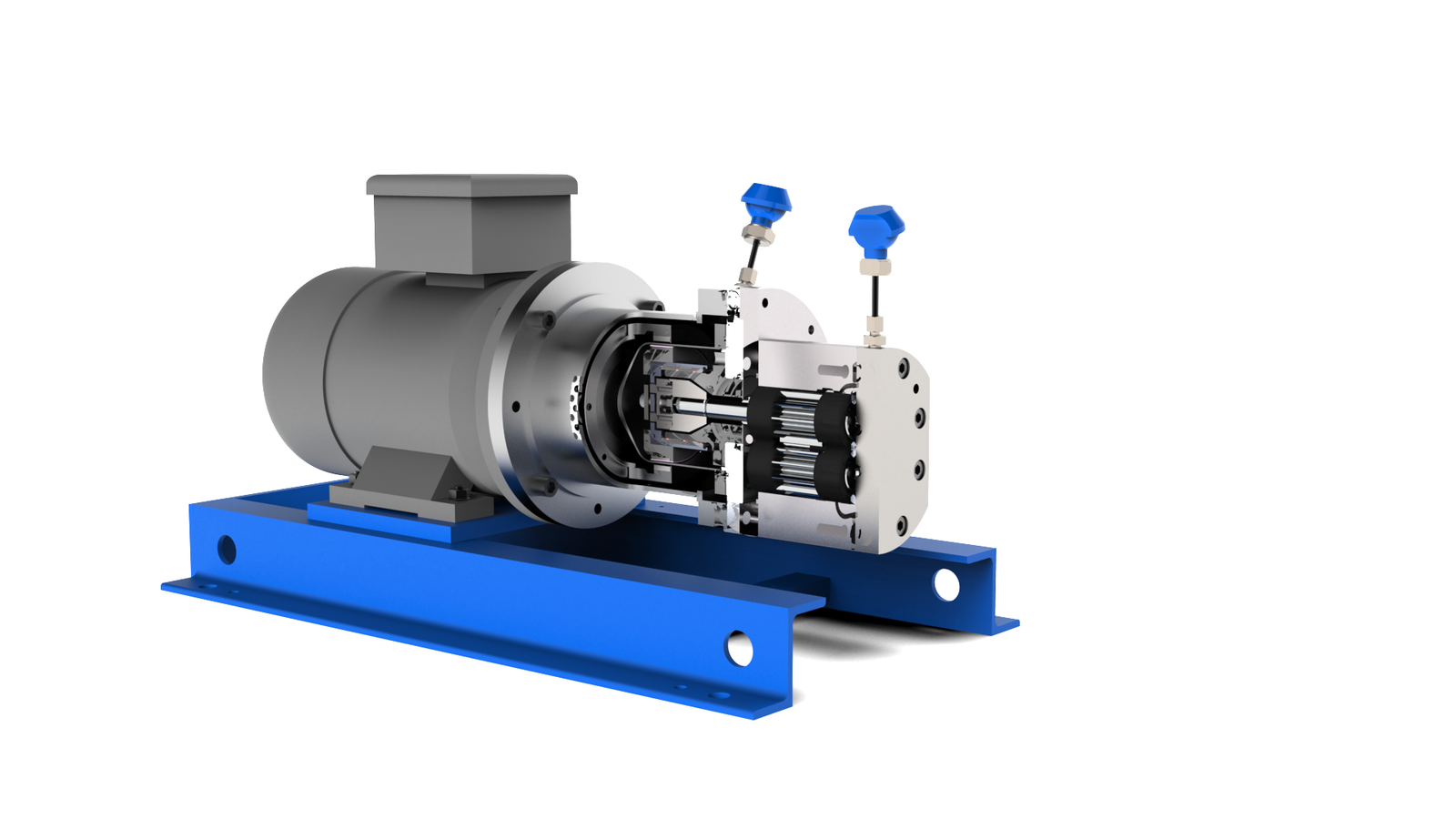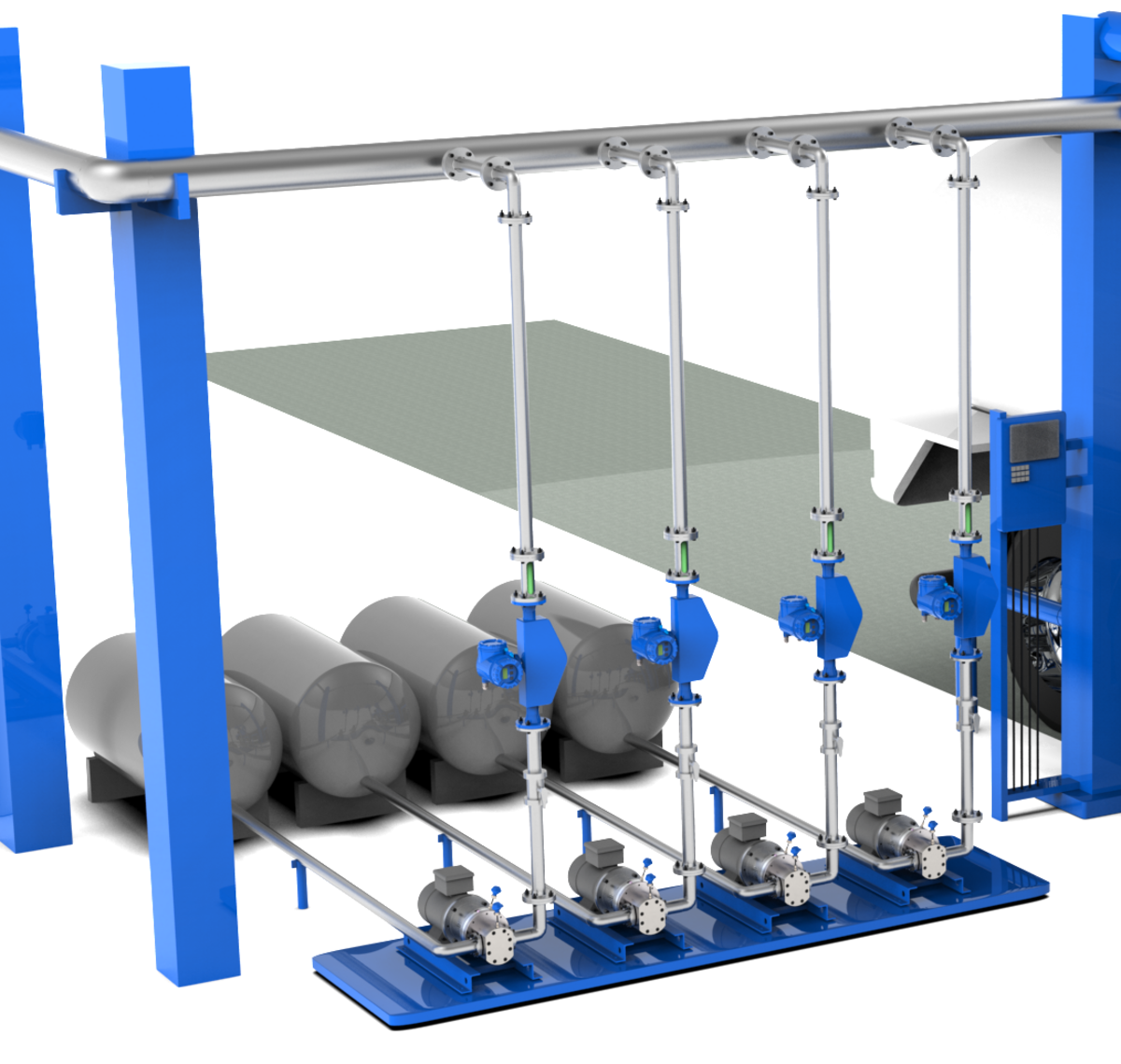Metering pumps for additives
A classic example is the coloring of fuels, which differs depending on the service station operator. When filling tank trucks or rail tank cars, gear pumps are used for the low-viscosity additives.They meter the required additives into the main stream.. A particular design-related advantage of gear pumps is volumetric metering in conjunction with very uniform, pulsation-free delivery. Depending on the metering accuracy requirements of the particular application, the pump can be supplemented with a volume or mass flow meter.

